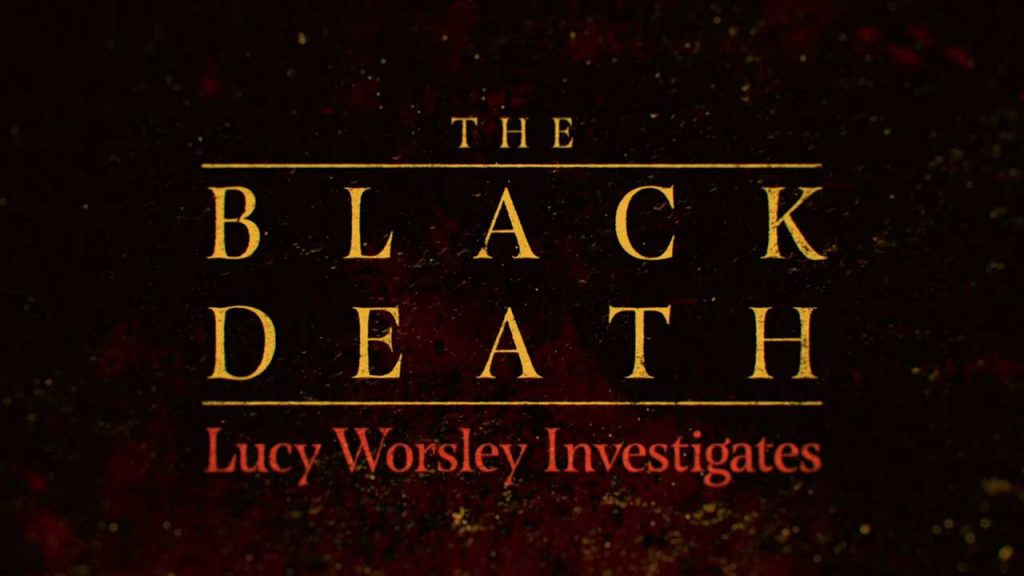Lucy Worsley Investigates – The Black Death: How did the Black Death change Britain? Lucy Worsley examines the latest science and explores how the huge death toll affected religious beliefs, class structure, work and women.
The historian examines four dramatic chapters in British history, exploring how changing attitudes to gender politics, class inequality, mental health and children can challenge perceptions of the past and provide new answers to each myster. She begins with the 16th-century witch hunts, when thousands of ordinary people, mostly women, were hunted down, tortured and killed across Scotland and England. Lucy Worsley investigates the mysteries of some of the most infamous and brutal chapters in British history, finding new witnesses and compelling evidence. What will she uncover?
Lucy Worsley is a British historian, author, curator, and television presenter. She is Joint Chief Curator at Historic Royal Palaces but is best known as a presenter of BBC Television series on historical topics.
Lucy Worsley Investigates – The Black Death
Black Death
The Black Death (also known as the Pestilence, the Great Mortality or simply, the Plague) was a bubonic plague pandemic occurring in Afro-Eurasia from 1346 to 1353. It is the most fatal pandemic recorded in human history, causing the death of 75–200 million people in Eurasia and North Africa, peaking in Europe from 1347 to 1351. Bubonic plague is caused by the bacterium Yersinia pestis spread by fleas, but it can also take a secondary form where it is spread person-to-person contact via aerosols causing septicaemic or pneumonic plagues.
The Black Death was the beginning of the second plague pandemic. The plague created religious, social and economic upheavals, with profound effects on the course of European history.
The origin of the Black Death is disputed. The pandemic originated either in Central Asia or East Asia but its first definitive appearance was in Crimea in 1347. From Crimea, it was most likely carried by fleas living on the black rats that travelled on Genoese ships, spreading through the Mediterranean Basin and reaching North Africa, Western Asia, and the rest of Europe via Constantinople, Sicily, and the Italian Peninsula. There is evidence that once it came ashore, the Black Death mainly spread person-to-person as pneumonic plague, thus explaining the quick inland spread of the epidemic, which was faster than would be expected if the primary vector was rat fleas causing bubonic plague.
The Black Death was the second great natural disaster to strike Europe during the Late Middle Ages (the first one being the Great Famine of 1315–1317) and is estimated to have killed 30 percent to 60 percent of the European population, as well as about one-third of the population of the Middle East. The plague might have reduced the world population from c. 475 million to 350–375 million in the 14th century. There were further outbreaks throughout the Late Middle Ages and, with other contributing factors (the Crisis of the Late Middle Ages), the European population did not regain its level in 1300 until 1500. Outbreaks of the plague recurred around the world until the early 19th century.
Consequences of the Black Death
The Black Death peaked in Europe between 1348 and 1350 with an estimated one-third of the continent’s population ultimately succumbing to the disease. Often simply referred to as “The Plague”, the Black Death had both immediate and long-term effects on human population across the world as one of the most devastating pandemics in human history.
These included a series of biological, social, economic, political and religious upheavals which had profound effects on the course of world history, especially the history of Europe. Symptoms of the bubonic plague included painful and enlarged or swollen lymph nodes, headaches, chills, fatigue, vomiting, and fevers, and within 3–5 days, 80% of the victims would be dead. Historians estimate that it reduced the total world population from 475 million to between 350 and 375 million. In most parts of Europe, it took nearly 80 years for population sizes to recover, and in some areas more than 150 years.
From the perspective of many of the survivors, the effect of the plague may have been ultimately favorable, as the massive reduction of the workforce meant their labor was suddenly in higher demand. R. H. Hilton has argued that those English peasants who survived found their situation to be much improved. For many Europeans, the 15th century was a golden age of prosperity and new opportunities. The land was plentiful, wages high, and serfdom had all but disappeared. A century later, as population growth resumed, the lower classes once again faced deprivation and famine.




